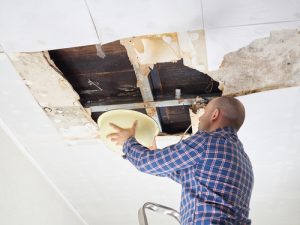 Subflooring is an important component of any house. It keeps the first floor in place by securing the joists that span the basement or crawl space. It also forms a plane that holds up your walls and serves as a level foundation for completed floors. Considering the enormous importance of this structure, hiring reliable water damage restoration services in Clairemont Mesa should be your top priority when dealing with wet subflooring.
Subflooring is an important component of any house. It keeps the first floor in place by securing the joists that span the basement or crawl space. It also forms a plane that holds up your walls and serves as a level foundation for completed floors. Considering the enormous importance of this structure, hiring reliable water damage restoration services in Clairemont Mesa should be your top priority when dealing with wet subflooring.
However, you should also try to gain some insight into the potential consequences of leaving your subflooring unattended. We’ll explain the different ways water can harm your subflooring. Also, we’ll discuss whether homeowners insurance covers subfloor damage. Read on!
What happens if your subfloor gets wet?
Water can reach subflooring from many sources, and once it sets in, prolonged exposure can lead to extensive damage. This component can lose its strength and the ability to support adjacent elements. However, if you start treating water-damaged subfloor quickly you can mitigate the harm and avoid having to replace your subflooring.
One of the most common forms of damage is rot. You can easily recognize rotting subflooring if it feels spongy under your feet. The subfloor can also squeak or bounce when you’re walking across the area. Other signs of rot include musty smells, damp spots, and sagging boards.
Rot can result in expensive repairs, depending on the room’s size as well as materials. Another big factor is how long the surface has been exposed to moisture, which is why discovering the issue in its early stages will give you the upper hand in resolving it.
Some situations are also more urgent than others. For instance, if the moisture has gone under a wall or damaged any wall plates or joists, it’s time to bring in the pros. They have all the knowledge and skills to deal with the moisture and prevent water from harming your house any further.
Does homeowners insurance cover subfloor?
In general, homeowners insurance covers subfloor water damage. However, it must be caused by one of the perils listed in your insurance policy.
If you have an HO-2 policy, your building, including the floor, is protected against various threats, such as a ruptured water heater or pipe. Condo owners with HO-6 policies have the same coverage, whereas HO-3 policy-holders are insured against damage from any source that isn’t specifically excluded in their policy.
Regardless of the cause of wet subflooring, you need to take action immediately and stop the water. Make sure to shut down your home’s water supply and call water damage experts to prevent the water from spreading and affecting other areas.
In addition, filing your water damage insurance claim will go much smoother if you document everything. Don’t forget to take pictures of your subflooring, as well as any other areas that may have sustained water damage. This includes furnishings, appliances, and personal belongings.
Need water damage restoration professionals in Clairemont Mesa? Give us a call right now!
 You may be able to handle some DIY repairs around the house, but water damage is best left to the experts. Reach out to KIC Restoration as soon as you notice signs of water intrusion and we’ll be at your doorstep in no time. We’ll assess the area thoroughly and think of a restoration plan that’s most suitable for your situation. Afterward, our trained technicians will perform comprehensive repairs, just as they have done numerous times in the past.
You may be able to handle some DIY repairs around the house, but water damage is best left to the experts. Reach out to KIC Restoration as soon as you notice signs of water intrusion and we’ll be at your doorstep in no time. We’ll assess the area thoroughly and think of a restoration plan that’s most suitable for your situation. Afterward, our trained technicians will perform comprehensive repairs, just as they have done numerous times in the past.
All you need to do is pick up the phone and dial our number. With KIC Restoration by your side, you won’t have to spend countless hours dealing with water damage and postpone your visit to Mission Trails Regional Park and all the majestic scenery.
Book our service and you’ll be in great hands!
